Experience the Journey
Discover Siouxland’s history and culture
Permanent Exhibits
Our permanent exhibits draw guests into an interactive journey with the Corps of Discovery through Siouxland by telling stories in novel ways, including moving and speaking animatronic figures, murals, video, computers, flip books, stamping stations, text-and-graphic panels, hand-painted murals, a brass-rubbing station, and reproductions of military equipment.

President Thomas Jefferson
Installed in 2016, the President Thomas Jefferson animatronic relates the president’s dreams about finding a direct water route to the Pacific Ocean to promote U.S. interests. The third U.S. president “instructs” Capt. Meriwether Lewis to learn and record all that he can about the people and natural environment of the West, including present-day Iowa, South Dakota and Nebraska.
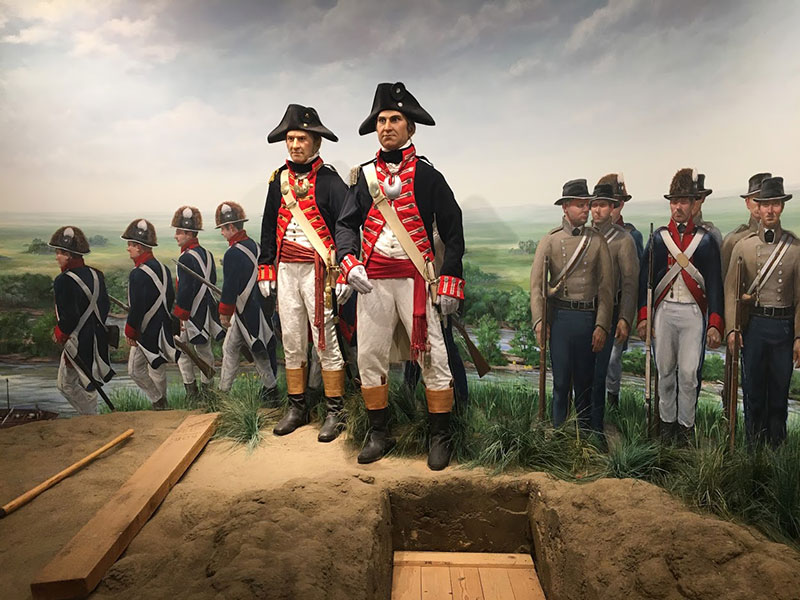
Captains Lewis and Clark
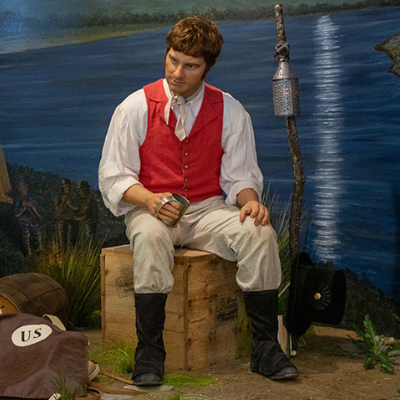
Sgt. Charles Floyd
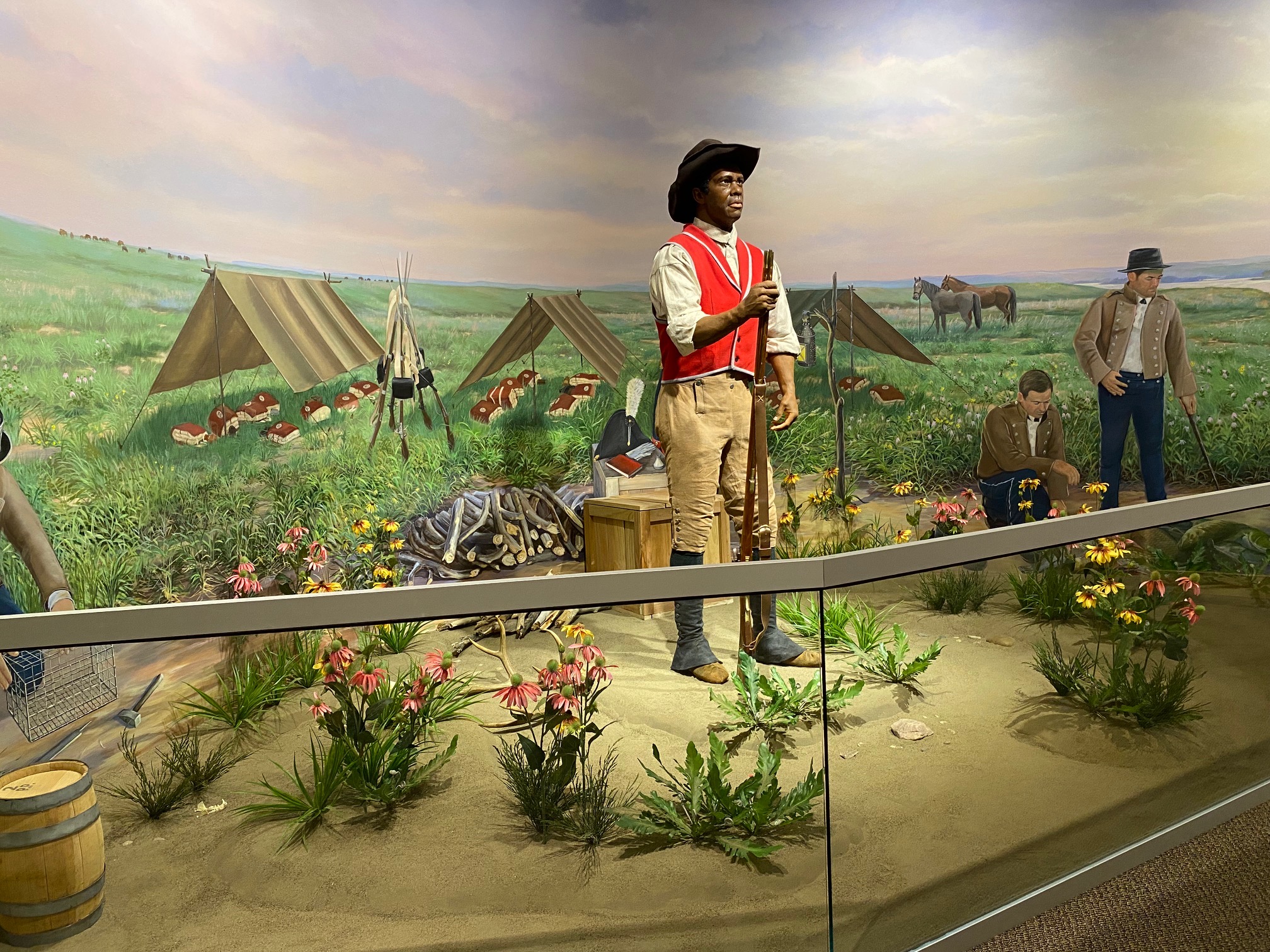
York
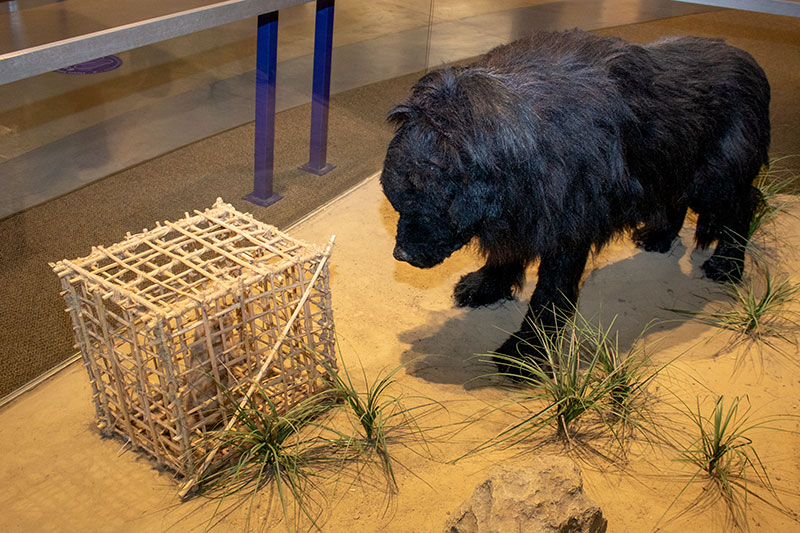
Seaman the Newfoundland Dog
Near Lynch, Nebraska, the Corps and Seaman attempted to coax a “barking squirrel” (prairie dog) from its hole. They finally caught one and kept it in captivity until April 1805 when it was sent down the Missouri River to President Thomas Jefferson.
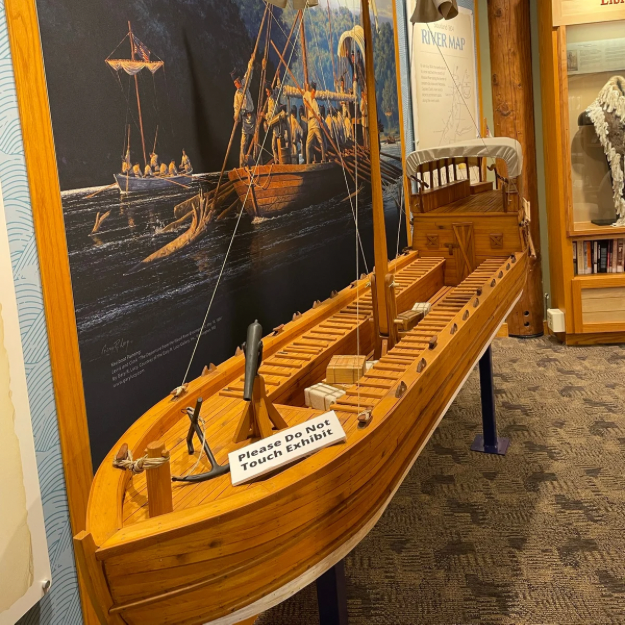
Corps of Discovery’s Keelboat
Constructed in the summer of 1803, the keelboat was the Corps of Discovery’s main transportation during the first year of the expedition. The barge traveled over 1,000 miles and carried 12 tons of cargo, including valuable items such as food, medicine, and scientific equipment.
After wintering in present-day North Dakota, the keelboat returned to St. Louis manned by a small crew. But it did not return empty handed; the Captains loaded the boat with plant and animal specimens, notes from the journey, and Native articles. The Captains and their crew would proceed without the boat for the remainder of the journey.
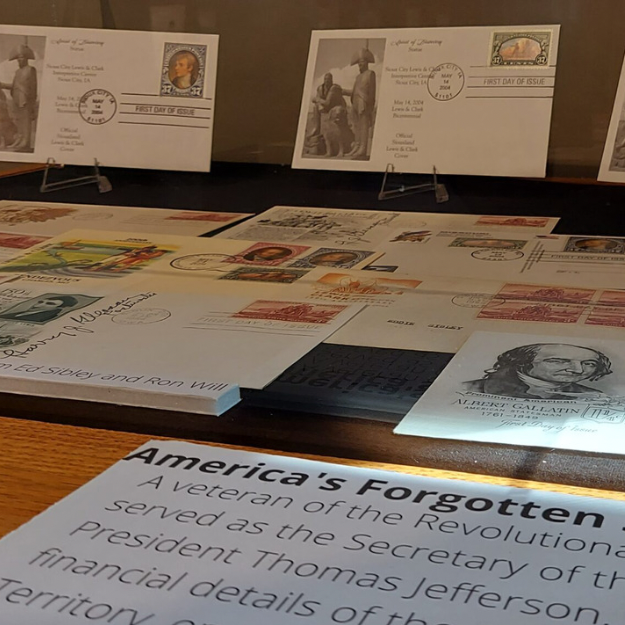
“Commemorative Stamps of the Expedition” Exhibit
The “Commemorative Stamps of the Expedition” display looks at the Lewis and Clark-themed stamps issued for the 150th anniversary of the Corps of Discovery’s journey to the Pacific Ocean.
In February 1954, Iowa Senator Charles B. Hoven introduced a bill to create a commemorative stamp honoring the expedition. Later that year, Postmaster Arthur Summerfield announced that the stamp would be issued in Sioux City, Iowa, as the city was the final resting place of the expedition member Sgt. Charles Floyd. Sgt. Floyd died from what historians believe to be appendicitis on August 20, 1804 and was buried on a bluff next to the river.
The 3-cent stamp was designed by Charles R. Chickering with design input from Bernard DeVoto, a well-known American West historian and author of the time. The burgundy stamp features an image of Captain Meriwether Lewis, Captain William Clark, and Sacagawea landing on a Missouri riverbank.
Other stamps were produced featuring the Captains individually as well as featuring Albert Gallatin, Secretary of the Treasury at the time of the expedition. Gallatin arranged the financial details of the purchase of the Louisiana Territory, ensuring that taxes would not be raised. He assisted in preparation for the expedition by arranging the creation of a new map of the west that combined the nine most recent maps of the land.
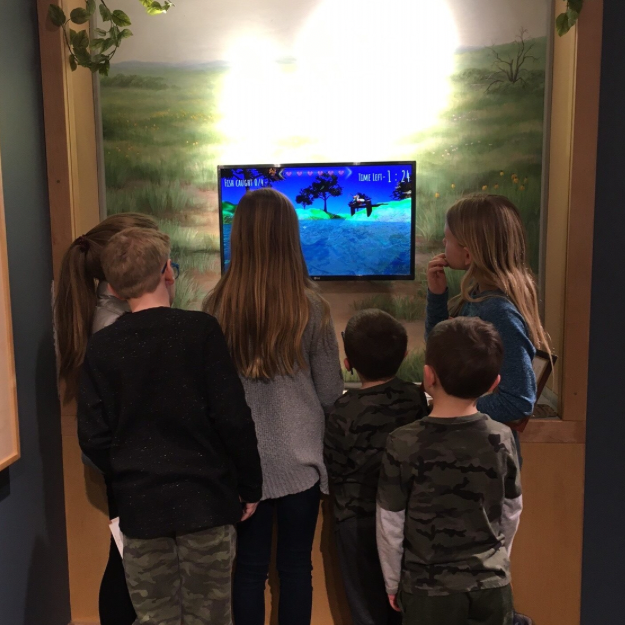
“Percy the Pelican’s Adventures” Video Game
Months in the planning, the Sioux City Lewis and Clark Interpretive Center in collaboration with Western Iowa Tech Community College (WITCC) and Mytopia Gameware Institute (MGI) released an innovative, hands-on videogame: “Percy’s Adventures” in the fall of 2021.
The game introduces visitors of all ages to the Lewis and Clark Expedition and the events that occurred in Siouxland. Visitors will play as “Percy the Pelican,” the Center’s Kids’ Club mascot. As the character “Percy,” visitors encounter a series of challenges from choosing correct supplies, navigating mazes, and going fishing to successfully reach the end.
WITCC instructor Steven Chinn and Frank Heffner from MGI, along with dedicated interns, consulted on and constructed the game. Joe Hlas, the Center’s facility manager, designed and installed the exhibit setting. The Center’s Sara Olson drafted the game’s storyboard. Sara Bogenrief, Scott Tucker, and John Sage and others from the community helped to bring the games to life.
